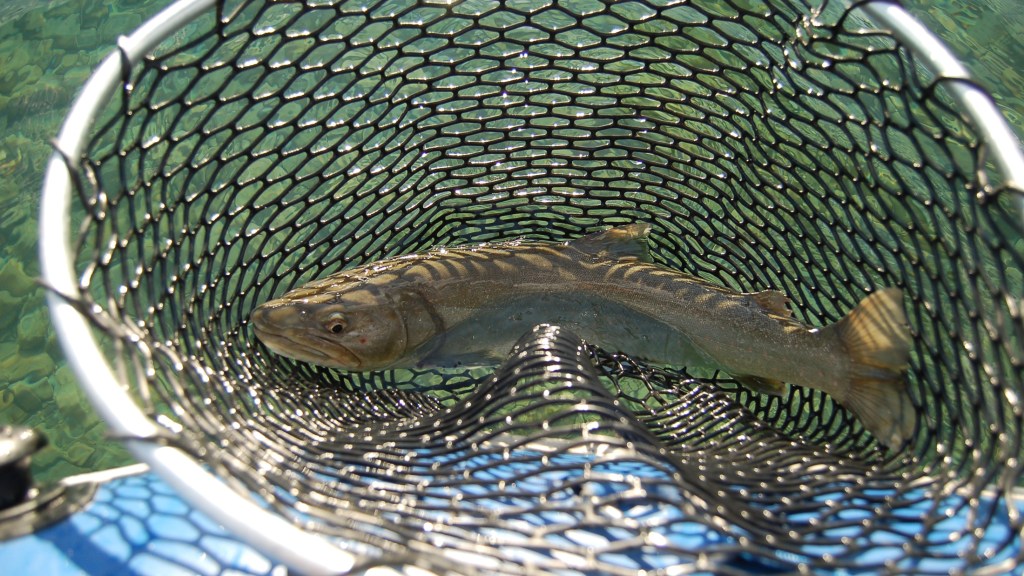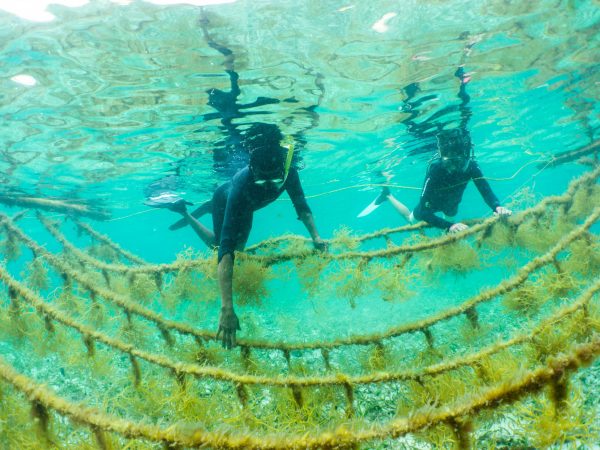Meet one of the champion binge eaters of the world: bull trout.
When the young salmon are running, bull trout are feeding — and stuffing themselves more than even biologists thought possible.
New research just published in the Journal of Animal Ecology reveals the remarkable eating habits of bull trout at Chilko Lake, British Columbia. I recently spoke with the lead author of the paper, Nathan Furey, a Ph.D. candidate in the Pacific Salmon Conservation and Ecology Lab at the University of British Columbia.
The Salmon Feast
Anywhere large numbers of animals migrate, predators key in to take advantage of the bounty. There’s one challenge: many migrations pass by quickly, and the rest of the year can be slim pickings. Imagine an all-you-can eat buffet that is only open for 1 month each year, and is your best eating option in town.
A potential solution is binging. But bull trout appear to take binge feeding to a new extreme.
Nathan Furey and his colleagues started observing this while focusing on juvenile sockeye salmon smolts as they move downstream from Lake Chilko each year. It is one of the largest populations of sockeye salmon in British Columbia, with between 10 and 40 million juvenile fish leaving the lake each year over a four-week period.
During this period, the river can “black out” so thick are the juvenile sockeye salmon. But an observer will notice regular silvery flashes slicing through the salmon: bull trout.
Research showed that juvenile salmon experienced high mortality early in the migration. “We were also amazed by the congregations of bull trout that we were seeing in the river,” Furey says. “So in 2013 we started taking stomach samples from bull trout to see if they were eating smolts and how many.”
The researchers took more samples in 2014, and teamed up with USGS biologists who conducted feeding trials on bull trout in a lab setting.
What they found was astounding.

Bull trout stomachs often contained 20 or more salmon smolts. Some contained more than 60. “These are conservative numbers because some fish are partially digested,” says Furey. “It is likely that some bull trout had 100 individual fish in their stomach. In some stomachs, the smolts were almost all in really fresh condition, so they ate a lot in a really short period of time.”
They found that an adult bull trout in the Chilko could eat 5 to 12 percent of its body weight in a given day. The smaller bull trout held in lab tanks could eat 10 to 30 percent of their body weights in a day. That is like a 180-pound person eating 18 to 60 pounds. In a day.
Filling the Tank
What is even more astounding is that the bull trout accomplish this eating feat in cold water. Bioenergetics predicts that digestion slows down in cold water, and correspondingly limits what an organism can eat.

“We found that even when the water was cold, bull trout were stuffing themselves,” Furey says. “At 3 degrees Celsius, bull trout could eat 15 to 85 times more than what bioenergetics models suggested could be eaten daily.”
How do bull trout do it? “Just because you eat something doesn’t mean you have to digest it that day,” says Furey.
Bull trout store food in their gut and digest it over time. At first glance, a bull trout stuffed with smolts — Furey says they look they like fully inflated footballs — might seem to be on a constant, month-long binge. That’s not really the case. As the smolts leave the lake, the bull trout gorge for a day, tracking the prey into the shallows at night.
After that first day, though, the feeding tapers off. “It’s like a water tank. You can fill it up, but then you can’t add more until some water is drained off. You can then top it off but only by the amount you drained; you can’t refill the whole tank,” Furey says. “A bull trout can stuff its stomach on that first day. After that, it can top off but can’t just keep binging.”
The simple ability to hold food in the gut can dramatically increase consumption of smolts by bull trout, as well as increase bull trout growth.

Throughout much of their range, bull trout are threatened. Salmon are expected to be important sources of energy for bull trout in systems where they coexist. Thus the conservation of salmon is important for these char. Bull trout are effective predators but that surge of prey can’t be replaced if the salmon are gone.
It’s just the latest research on the intricacies of the salmon migration. “Binge feeding is an important part of these interactions between bull trout and migrating salmon migration,” says Furey. “It impacts both predator and prey. It was assumed that cold water would limit what a fish could eat. But cold water doesn’t mean a bull trout won’t eat, or will only eat a little. It will take advantage of the bounty, hold food in its gut and then digest it.”




Sale on Tillamook Ice cream for a short time … binge eating required 🙂
Thanks for the update. I knew they ate a lot of salmon but never new so much of it happened in such a short time.
I wonder if lake charr might similarly gorge on prey fish under some circumstances.